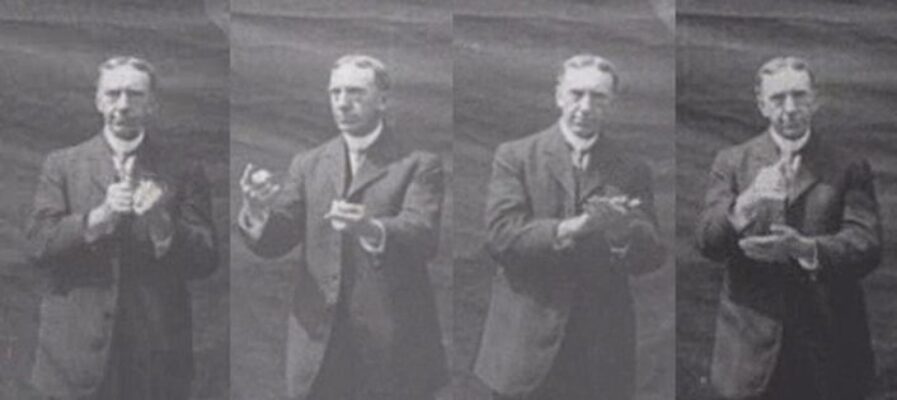The origin of sign language remains a mystery. Some date its origin to Christianity and the Renaissance, while others speculate it to be even older. The scientific evidence at hand sheds light on this practice from all sorts of angles.
From research on hominid bones, Paleontologists have discovered that our ancestors lacked space to house the complex set of vocal organs required for human speech. Therefore, the idea that prehistoric men may have used sign language to communicate, before the development of speech, is not all that far-fetched!
Early Traces of Signing
Communication using hand signals has been used throughout history to facilitate interaction both between groups from different cultures, and within non-verbal communities:
- In order to establish trade relationships with Europeans, Native Americans used to various signals to communicate.
- The settlers of Martha’s Vineyard, an island off the coast of Massachusetts, carried a specific gene that caused mass deafness. They developed a limited, regional sign language to facilitate communication among themselves, and with others.
- During the 11th century, monks who had taken a vow of silence, used signs to communicate amongst themselves.
- In the 1500s a Spanish Benedictine Monk named Pedro Ponce de Leon developed and used sign language to teach students across Spain. He became the first official teacher of the deaf, and in doing so established the early roots of sign-based communication.
Origins of formal Sign Language
Charles Michel de l’Epee was the first person to establish sign communication norms as a formal language. He was a French priest, who in 1755, established a public school for deaf children – the Institution Nationale des sourds-muets de Paris (National Deaf-Dumb Institute of Paris).
This was the first recorded example of an an individual establishing a systematic and organised approach to teaching the deaf. For better understanding, Charles even related the signs to the alphabet. He created a sort of sign language dictionary which greatly aided the learning process.
Students flooded the institution from across the country, and paved the way for many other schools and programmes. Epee is known by some, as the ‘Father of the Deaf’.
Impact of formalised Sign Language
Helen Keller famously became the first person to make an impact worldwide with her use of sign language. However, she was not the first deaf-blind individual to receive an education.
Fifty years before Helen Keller, Laura Brigman was born on December 21, 1889, in Hanover, New Hampshire. Tragically, she lost three of her siblings to Scarlet Fever at the age of two. Laura survived, but became blind and deaf, as well as loosing her sense of taste and smell. She became the first deaf and blind individual to receive a formal education at the Perkins Institution for the Blind. Where she learned to read and communicate using Braille and the manual alphabet developed by Charles-Michel de l’Épée.
Charles Dickens met her during his 1842 American tour and wrote about her accomplishments in his American Notes.
Sign language found popularity in sports when crowd favourite, baseball player William “Dummy” Hoy, scored his first grand slam during the American League. Hoy went on to break many baseball world records, leaving an everlasting mark on the game. He also encouraged the disabled community to believe that anything was possible.
This is part one of a two-part article. Part two will follow next week.

